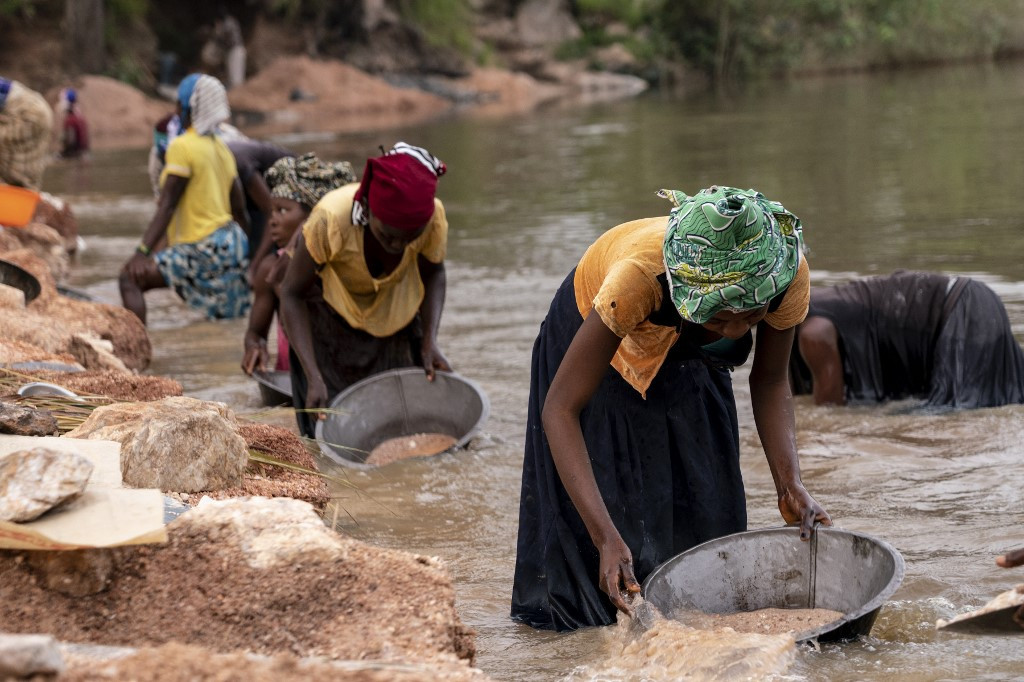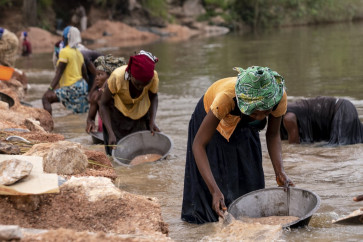Popular Reads
Top Results
Can't find what you're looking for?
View all search resultsPopular Reads
Top Results
Can't find what you're looking for?
View all search resultsDecaying Congo tin mining town finds new hope in lithium
A large deposit of lithium -- the metal used to make rechargeable batteries in phones and electric cars -- has been found in the remains of the former mining town of Manono.
Change text size
Gift Premium Articles
to Anyone
N
ear the rusting carcass of a smelter, barefoot men and women scratch at the ground in the quest for cassiterite -- the tin oxide ore that generations ago gave the town of Manono a brief taste of the good life.
The diggers carry the sandy earth to the Lukushi River where women wash the grit in metal bowls, hoping to find some black nuggets from which to make a living.
Standing in the water from morning to evening, washing the spoil and looking for ore brings in between 15,000 and 18,000 Congolese francs ($7.50 to $9.00 / 6.70 to eight euros) per day.
"There is nothing else in Manono," said Marcelline Banza, a 28-year-old mother of three. "Life is very difficult."
Manono, a town in Tanganyika province in southeast DR Congo, is almost a textbook case of a mining town that went from boom to bust.
"Most of the people live below the poverty line and prefer to dig (for cassiterite) rather than work the fields," said Patrice Sangwa, the district's head doctor.
This isolated corner of the vast country is battling malnutrition, cholera and even a measles epidemic, which has killed dozens of children since December.



















